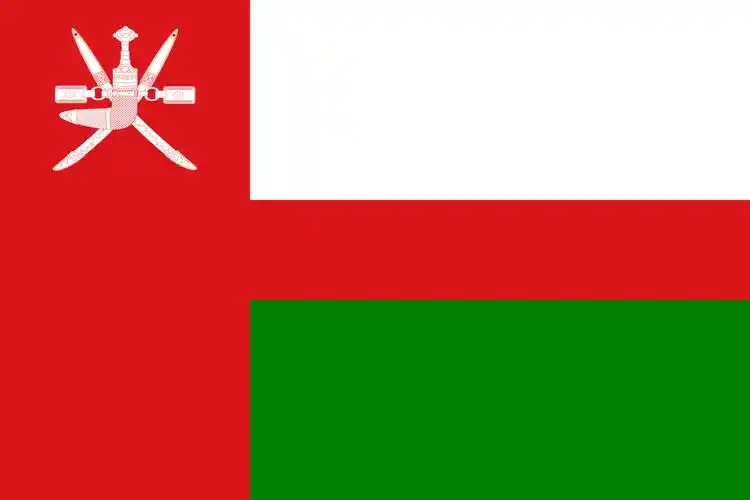Overview of Oman

The Sultanate of Oman is located in the southeastern part of the Arabian Peninsula in West Asia, bordering the United Arab Emirates to the north, Saudi Arabia to the west, and Yemen to the southwest. Oman has a land area of approximately 309500 square kilometers and is the third largest country in the Arabian Peninsula region.
Population and ethnicity
As of January 2024, the population of Oman is approximately 5.16 million. The main ethnic group is Arabs, accounting for 57% of the population. The official language of Oman is Arabic, with English being commonly used.
historical background
Oman is one of the oldest countries in the Arabian Peninsula. In the 7th century AD, it became part of the Arab Empire and gained independence at the end of the 11th century. In 1507, Oman was invaded and colonized by Portugal for a long time. In 1649, the local people of Oman overthrew Portuguese rule and established the Ariba dynasty. In 1871, Britain invaded Oman and forced it to accept unequal treaties. In 1920, British colonizers signed the Treaty of Sib with the "Islamic State", recognizing its independence, and Oman was divided into two parts: the "Sultanate of Muscat" and the "Islamic State of Oman". In 1967, Sultan Said bin Temur of the "Sultanate of Muscat" unified the entire territory of Oman with the support of Britain and changed the name to "Sultanate of Muscat and Oman". In 1970, Temur Sultan ascended to the throne with his son Qaboos and changed the country's name to "Sultanate of Oman", which has been used to this day.
Political system
Oman is a monarchy, with the Sultan serving as both the head of state and the head of government. The current Sultan is Hussein bin Talig Al Said.
Economic situation
Oman's economy mainly relies on the oil and gas industry, with oil and gas revenue accounting for 68% of the country's fiscal revenue and 41% of its gross domestic product. In 2022, Oman's gross domestic product was 86.3 billion US dollars, with a per capita gross domestic product of 19000 US dollars.
Culture and Education
The official language of Oman is Arabic, Islam is the state religion, and the main sect is the Ibadan sect. Oman implements a free education system, with major universities including Qaboos University and Suhar University.
Geographical features
The terrain of Oman is mainly composed of plateaus and coastal plains, with many mountains in the northeast. The highest point is Mount Sham, with an elevation of 3352 meters. The climate belongs to the tropical desert type, with hot and cool seasons throughout the year. The temperature in the hot season can reach over 40 ℃, while the average temperature in the cool season is about 24 ℃.
tourist resources
Oman has many famous tourist attractions, including Kurum National Park and the Strait of Hormuz. These places not only showcase Oman's natural beauty, but also reflect its rich history and culture.
The economic profile of Oman can be summarized as follows:
Economic growth and industrial structure
Oman's economy is growing rapidly, with a gross domestic product (GDP) of 44.1 billion riyals in 2022, an increase of 33.6% from 2021. Oman's economic structure is dominated by the oil and gas industry, accounting for 34.5% of GDP, followed by the service industry (46.3%) and industry (19.8%).
Development of Manufacturing Industry
Oman is vigorously developing its manufacturing industry, and the government has introduced a series of incentive policies, including reducing taxes and fees for small and medium-sized enterprises and providing long-term residence permits for foreign investors. In 2019, Oman collaborated with the United Nations Industrial Development Organization to propose the "Industrial Strategy 2040", aiming to triple the contribution of manufacturing to GDP by 2040, attract 40 billion riyals of investment, and cultivate a culture of industrial innovation. In addition, Oman plans to produce at least 1 million tons of hydrogen annually by 2030, most of which will be exported, and collaborate with Dutch companies to build the world's first "liquid hydrogen corridor".
Trade situation
As of the end of July 2024, Oman's total import and export trade reached 23.14 billion riyals, a year-on-year increase of 11.7%. The export value was 13.72 billion riyals, a year-on-year increase of 7.6%, of which the export value of non oil commodities reached 4.152 billion riyals, a year-on-year increase of 5.1%. The import value was 9.416 billion riyals, a year-on-year increase of 11.7%, with the main imported goods being minerals and machinery and equipment.
Financial situation
As of the end of August 2024, Oman has achieved a fiscal surplus of approximately 357 million riyals, with a total fiscal revenue of 8.016 billion riyals, a year-on-year increase of 2.3%. The petroleum industry has a relatively large proportion of revenue, while natural gas revenue has declined.
investment environment
The investment environment in Oman is good, and the government has launched a series of economic incentive programs, including reducing taxes and fees for small and medium-sized enterprises and providing long-term residence permits. In addition, the Oman Sovereign Wealth Fund Oman Investment Authority has launched the "Oman Future Fund", focusing on industries and manufacturing, information and communication technology, and other fields.
In summary, under the strong promotion of the government, Oman's economy has made significant progress, especially in the manufacturing and new energy sectors, while its trade and fiscal situation has also remained stable.

